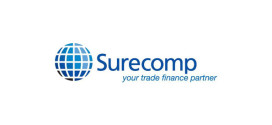
The increasing potential and importance of South-South trade is reviewed by ALEXANDER R. MALAKET, CITP, president of Opus Advisory Service International Inc. (pictured) In particular, he looks at developments between Asia and the Middle East and relationships evolving through and beyond the global crisis.
The global balance of power is shift – ing, as is its nature over time, and the trade and economic fl ows that contribute – substantially – to the latest transformational energy have been apparent for some time. Arguably, the global crisis that reverberated across the world at diff erent rates and with varying intensity helped amplify and accelerate the changing realities observed today in many key markets.
As the G-8 economies fi ght to retain infl uence in world aff airs, those in G-20 are gaining profi le and stature, and, as the United States and Europe continue to wrestle with the impacts of the crisis, the BRIC countries – Brazil, Russia, India and China – are exploring opportunities for collaboration, and generally fl exing various forms of infl uence.
The United States remains the largest consumer economy on the planet, inevitably infl uencing the state of the global economy and international trade. At the same time, however, domestic concerns such as high unemployment, ongoing issues with the fi nancial sector, the economic impacts of military operations and healthcare reform are all contributing to a sense that the world’s big buyer will have to rein in spending, or at least refocus its direction in a more selective manner.
In Europe, the adverse impact of the crisis continues to spread, from the UK, struggling under a mountain of debt and diffi cult days across several industry sectors, to the diffi culties encountered in the unfortunately named PIIGS – Portugal, Ireland, Italy, Greece and Spain – at their worse, motivating serious consideration of the implications of sovereign default, despite assurances of support from stronger economies and from sources such as the IMF.
The global crisis continues, and its ultimate consequences remain unclear – expectations include wholesale political and economic redesign (“capitalism as we know it is dead”, and “it is time for a new economic and fi nancial order”), but there are also views that suggest the “system” will be back in working order, and that the crisis is, in many respects, a necessary correction.
Trade finance
Such debates aside for the moment, one thing is clear: the profi le of international trade as a driver of global economic health has been brought sharply into focus by the prevailing circumstances. Even trade fi – nance has been granted an unprecedented profi le at the highest levels of business and government as the critical lubricant of global commerce.
In this context, certain trends and changes in trade fl ows and the evolution of trading partnerships have been accelerated: the long-anticipated “decoupling” of Asian economies from dependence on the dollar and the US economy has recently been described as “eff ectively underway” by some commentators. With China rebounding to near pre-crisis growth rates, and successfully raising the profi le of the RMB as a currency of regional commerce, the argument is at least partially supported by market developments.
Arguments suggesting that the Yuan is artifi cially undervalued have been a source of signifi cant tension between China and the United States, even as the Chinese currency shows increasing signs of being accepted and eff ective as a currency of regional and international commerce.
The China Council for the Promotion of International Trade recently surveyed more than 1,000 exporters across numerous industries, concluding that a sudden rise in the value of the Yuan was checking with more than 1,000 exporters in 12 industries on whether they wouldhave drastic consequences. Everything from low-margin textile businesses to the massive and growing shipbuilding sector would be impacted.
Over the longer term, and given the increasing importance of China as a trading economy, there is a clear intention not only to internationalise the RMB, but eventually to position it as an eff ective and accepted reserve currency. In this initial stage, trading partners may be offered signifi cant discounts for accepting RMB-denominated transactions (some indicate fi ve per cent or more of the face value of an invoice).
The availability of an alternate currency of international commerce will be attractive to many markets, including several in the Middle East, not least because of China’s explicit policy of non-interference in domestic aff airs, which extends to a “trade without political conditions” approach to cross-border commerce.
Regional strategy
There has been a clear and necessary tendency in various regions across the globe, to look for ways to mitigate the impacts of the crisis. In Africa, the Middle East and Asia, one strategy has been to look to regional trade and commercial partnerships, and while such activities had been underway for some time, there has been a notable acceleration over the past year.
By some estimates, trade within Asia is growing at twice the rate of growth of trade between Asia and the rest of the world. In addition, the scale and scope of infrastructure investments across Asia are staggering, and, as with markets in the Middle East such as Saudi Arabia and the UAE, infrastructure programmes are an important element of a broader recovery strategy.
Trade between Asia and the Middle East is illustrative: commercial partnerships and fl ows have been increasing for some time; the rate of development of Asia-Middle East trade fl ows will continue to increase, both as a continuing mitigation against economic dependence on the US and Europe, and as a natural extension of the resources-for-prosperity/investment dynamic that underpins China’s activities in markets from Canada to Brazil to Africa and beyond.
China is the largest exporter of merchandise goods to the Middle East, with trade fl ows exceeding 0bn, and it now surpasses the United States as the largest exporter to the region. Perhaps more tellingly, China is continuing to extend the global markets (including those in the Middle East) where it ranks as the top trading partner.
Oil and energy-based trade is one obvious component of the commercial relationship, with oil exports from Saudi alone exceeding $40bn in 2008, an increase in volume of over 130 times over the past 20 years. Infrastructure and construction- related trade is signifi cant, with China winning an increasing number of contracts across the region. Additionally, military and defence technology continues to be a signifi cant component of China-Middle East trade. Trade volumes with regional powers such as Egypt and Iran are also growing, exceeding $10bn in annual fl ows in each market.
While the “big numbers” tell one side of the story, it is equally important to appreciate the breadth of the burgeoning trade relationships between China and its various partners and allies in the Middle East.
Role of SMEs
Ben Simpfendorfer, chief China economist at the Royal Bank of Scotland, author of _ e New Silk Road, a unique exploration of the US %$10 trillion economy involving China and the Middle East, observes, “It is important to note that the trade fl ows developing between the Middle East and Asia are shaped, signifi cantly, by the commercial and trade activities of small and medium-sized enterprises. Yes, there are large projects and large transactions, but SMEs are critically important drivers of trade fl ows and of emerging commercial relationships across these dynamic regions.”
Th is reality has clear implications for fi nance managers and for trade fi nance providers and commercial lenders: it will be increasingly important to be able to respond to the fi nancing requirements of the SME segment in the Middle East-Asia trade fl ows.
In that context, and given the historical reliance of MEnA-based businesses on traditional instruments of trade fi nance – versus the desire of Chinese business executives generally to conduct business on open-account terms – the dynamics of trade will require some attention to the selection of appropriate trade fi nance mechanisms to serve the needs of – and protect the interests of – parties in both regions.
Certainly, the choice of trade fi nancing and settlement mechanism is related to the role a party plays in a transaction – importers generally preferring open-account terms, and exporters leaning toward documentary credits. however, there is a macro-level distinction between China and the Middle East, with businesses in the former favouring emerging settlement mechanisms and the latter continuing to show some preference for established mechanisms and instruments.
As financial expertise and solution options evolve in the trade fi nance and treasury space across both regions, it will be critical to ensure that cross-border settlement and risk mitigation options in the fi nancial dimension of trade keep up with the volumes and breadth of trade fl ows. Also, they must work eff ectively in support of evolving commercial relationships – everything from straightforward secure settlement to the eff ective use of structured fi nance solutions, appropriately denominated, as required to facilitate continued trade and investment growth.
Export credit
Chinese exporters have been increasingly open to the use of factoring-type fi nancing solutions and have been increasing their reliance on export credit insurance in targeting opportunities in the Middle East. however, even as trade and trade fi nance patterns evolve, it remains a fact that trade terms are determined by leverage – the trading partner with the greatest leverage continues to set the terms, including the selection of fi nancing and settlement mechanisms.
Consideration of trade activities between Asia and the Middle East – including China, and markets in the GCC – illustrates the broader implications of the emerging trade fl ows and commercial relationships. China now uses Dubai as a transhipment or re-export base for goods destined to markets across Africa – doing so at the expense of Johannesburg, which historically served as an access point to Africa. Similarly, Dubai is a key entry point for goods from China that are then re-exported across the region, and this trend is expected to continue, with the GCC predicted to be involved in about two per cent of global trade fl ows. Th e undeniable success of the UAE in this respect has prompted other markets, notably Saudi Arabia, to take initiatives in a similar direction, developing free trade zones and expanding port operations to enable greater trade fl ows.
Chinese manufacturers are actively seeking opportunities to leverage existing free-trade deals, by establishing facilities in selected markets – Egypt being one illustration of this development – as they extend their reach from the MEnA region. newly established, in-market manufacturing capabilities across the Middle East serve as a base for the export of Chinesemanufactured goods into target markets in the region.
Leading economies in the Middle East are seeing trade fl ows reshaped signifi – cantly. For example, Saudi Arabia, a net importer when oil-related trade is netted out, is focused on developing strategies and partnerships that will reduce its dependence on foreign-sourced food. Also, building materials and automobiles represent signifi cant import fl ows into Saudi, and indications are that those sectors will contribute to increasing trade flows between the Middle East and Asia, even as Saudi Arabia invests in food and agriculture initiatives in southern Sudan, Ethiopia and other parts of Africa.
Saudi Arabia is taking an overall strategic approach to the evolution of its trade flows and international activities, beyond simple import substitution, to equity and partnership-based approaches with downstream investments in sectors such a plastics and petrochemicals, across markets in both Europe and Asia.
Infrastructure investments will continue to be important in the MENA region, and in key markets, notably Saudi Arabia, foreign education is increasingly an area of focus – with the ultimate objective of having young Saudis return home to contribute to the development of the nation.
Within that context, however, those familiar with trade flows between Asia and the Middle East refer to the importance of consumer goods-related trade.
Dubai to Damascus
Simpfendorfer of RBS illustrates by referring to Yiwu, a town south of Shanghai that receives more than 200,000 Arab visitors annually, drawn to the town by the largest consumer goods exhibition halls in the world. He says, “Yiwu is, in effect, an Arab market town in China – and one which draws store owners from Dubai to Damascus. It is a clear illustration of the central role of SMEs in shaping trade flows between these regions.”
There is a longer history in commercial relations between the Middle East and India, yet China has an undeniable momentum, both at the “top end” of international business – infrastructure development – and at the more retail, consumer-driven end of the trade spectrum.
A senior Saudi oil executive remarked only five years ago, “We don’t yet understand how to do business with China – certainly not in the same way that we have dealt with our friends in India for so long – but we will get to know each other…” That remark now appears prescient.
Arup Roy, head of transaction banking at SABB in Riyadh, observes, “Broadly speaking, China enjoys a price advantage over India and other suppliers, and, as a major importer of Middle East oil, China is actively looking for reciprocity. Foreign exchange considerations as well as the availability of low-cost labour create a significant competitive advantage for China in developing its commercial and investment presence across the Middle East.”
The two-way nature of trade flows is highlighted by observers of these markets, as is the long-term potential of successful trade and investment activity. Beyond resources, infrastructure and consumer goods, experts foresee development in other dimensions – notably education, an area that has helped foster commercial relationships between markets as students return home with first-hand knowledge of a new region and take steps to develop trade or investment opportunities.
Roy comments, “After Saudi Arabia reaches its objectives in terms of reduced dependence on foreign agriculture and foodstuffs, the focus will shift much more onto infrastructure and efficiency – and an important element of the will be a focus on international education.”
Just as Kuwaitis were sent to India to study abroad for some period, it is inevitable – given the growth and focus on Asia – that educational exchanges will flow between these important regions, and over the longer term, serve as a basis for enabling and fostering broader, stronger commercial relations at every level – from retail to infrastructure to intangible, knowledge-based sectors.
The developments in commerce, trade and investment between Asia and the Middle East are not simply a matter of shifting focus from West to East – this is, for observers of those regions, a fundamental and conscious rethinking of approach and strategy among political and business leaders.
Turkey’s approach over the past two years or so is illustrative: a conscious and purposeful shift away from Europe (although it is still pursuing membership in the EU) toward the Middle East and Asia, with the effect that it has acquired levels of influence in the MENA region – previously unheard of – while also providing a diversified range of business and commercial partnership options.
Financial settlement volumes are increasing signifi cantly between Chinese and Middle East banks, at a time when traditional fi nancial centres such as London and new York – as well as Tokyo and Singapore – are facing strong competition from new markets seeking to become centres of fi nancial activity.
There are several realities that bode well for the evolution of trade and commercial relations between the Middle East and Asia. Diff erences in approach to foreign relations between China, the United States and Europe may factor in, with the former’s generally laissez-faire approach to the domestic policies and politics of commercial partners, contrasted with what some perceive as a more invasive approach by the US and Europe. Th ese perceptions and their implications extend directly to trade and investment dynamics, and, transactionally, down to the level of cross-border fi nancing and settlement.
Countries and cultures accustomed to taking a long-term view, will naturally look beyond the short and medium term – beyond the immediate need for specifi c goods, capabilities or resources, and beyond the imperative to manage eff ectively through what remains of the global crisis: they will look to the potential of partnership over a period measured, at a minimum, in decades.
The global crisis has had the eff ect of accelerating and focusing a trend in the increase of regional and South-South trade – motivating government, business and commercial organisations to look at opportunities in new markets, as both a defensive measure and as a consequence of the realisation that the economic centres of power are not infallible, nor are they guaranteed to continue to grow.
Just as nuances will evolve between Asia and the Middle East, in the pursuit of investment and trade opportunities, so, too, the mechanisms to support and enable that trade activity – from risk analysis/management to fi nancing and to the mechanics of cross-border settlement – will develop their own character within the context of internationally accepted practice. On the fi nancing side, the emerging solutions will likely combine the risk mitigation elements of traditional instruments favoured in the Middle East, with the fl exible and less cumbersome options around open account and supply chain-based techniques favoured in major markets in Asia.
 Cash And Trade Magazine For Cash and Trade professionals in the Middle East
Cash And Trade Magazine For Cash and Trade professionals in the Middle East




